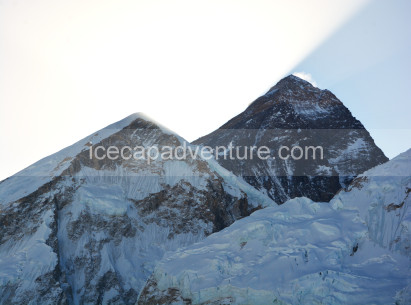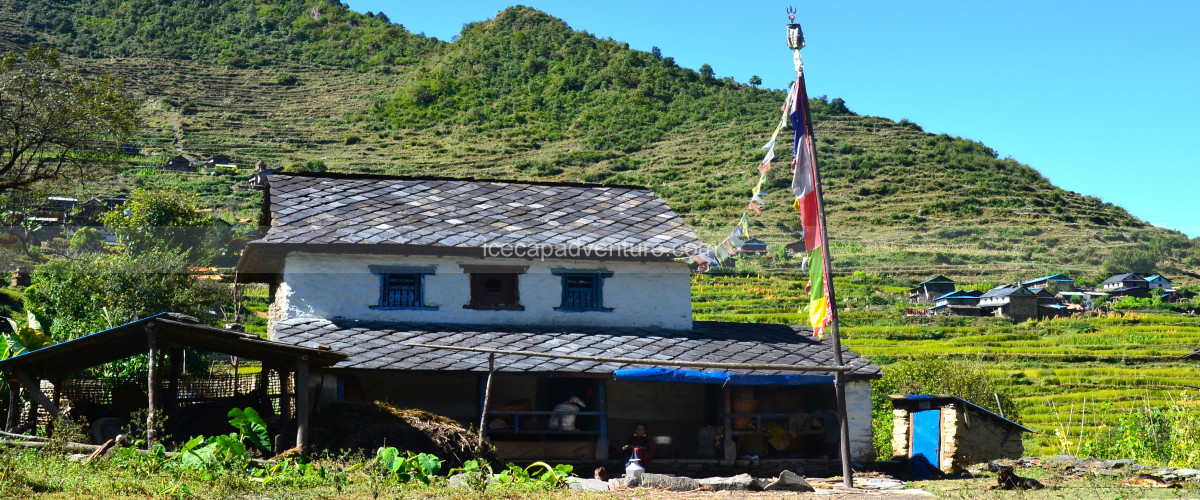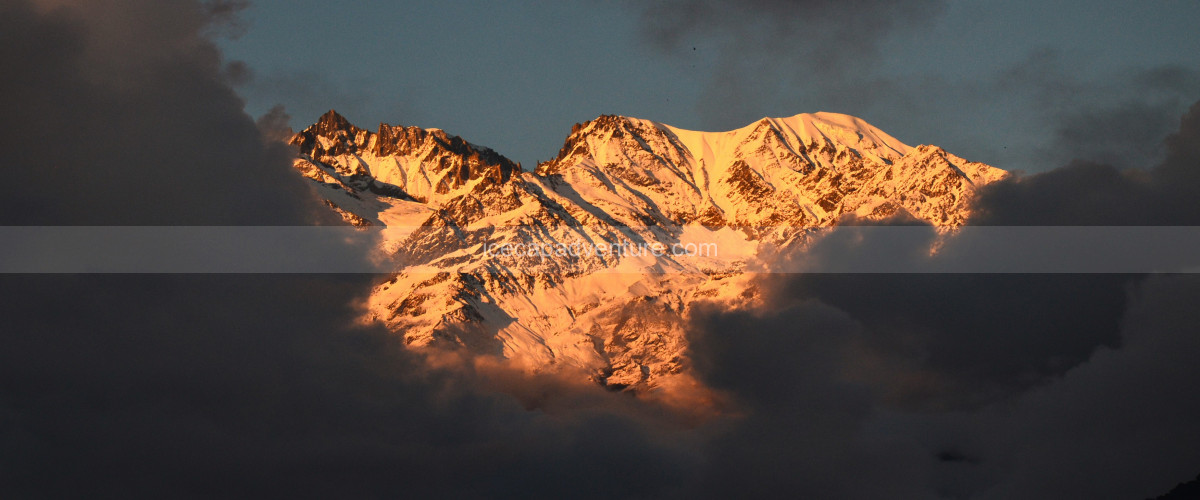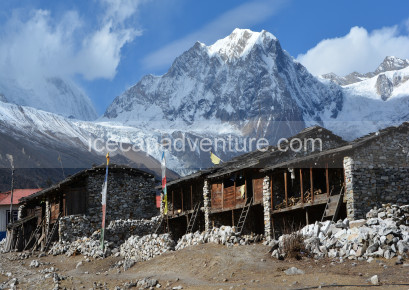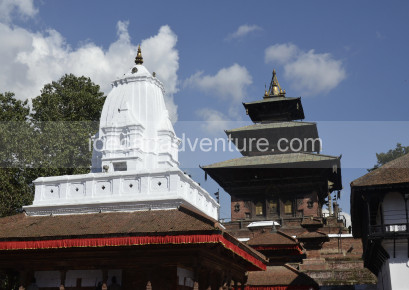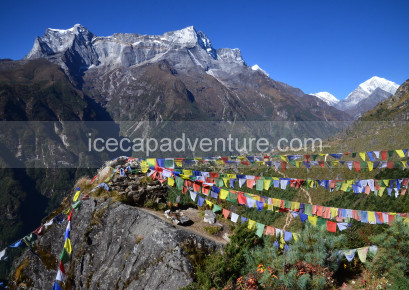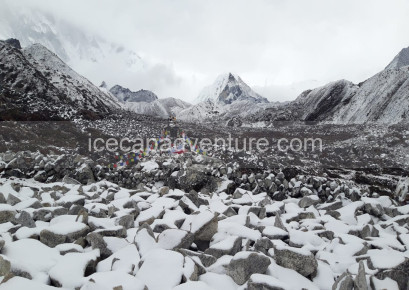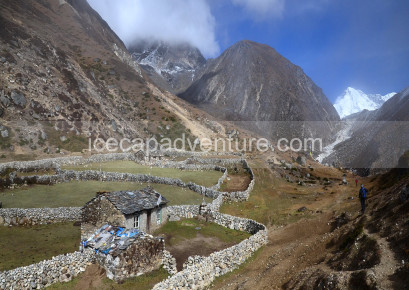.png)
.png)
.png)
.png)
.png)
.png)
.png)
.png)
Ganesh Himal Trekking is a hidden gem in central Nepal, offering a serene Himalayan experience away from the crowds. Nestled between the Langtang and Manaslu regions, this trek treats adventurers to majestic mountain panoramas, lush forests, and charming villages. Known for its quiet trails and spectacular viewpoints, Ganesh Himal Trekking is ideal for trekkers seeking a combination of natural beauty, cultural immersion, and moderate adventure.
Nature and Wildlife
The trek winds through thick rhododendron, oak, and pine forests, teeming with birds and occasional sightings of langurs and other Himalayan wildlife. From every vantage point, the snow-capped peaks of Ganesh Himal, Salasungo, Langtang Lirung, and Annapurna dominate the skyline, creating countless photo opportunities and unforgettable landscapes.
Trekking Challenges & Rewards
Ganesh Himal Trekking is considered moderate, with some steep ascents and high-altitude sections reaching around 4,500 meters. While the trail demands stamina, trekkers are rewarded with awe-inspiring mountain views, peaceful alpine scenery, and intimate encounters with local communities, making the effort truly worthwhile.
Best Seasons to Visit
Spring (March–May) and autumn (September–November) are the best seasons to trek. During these months, the skies are clear, the rhododendron forests bloom with vibrant colours, and the mountains reveal their full glory.
Cultural Significance
The region is rich in Tamang and Gurung traditions, with villages featuring stone houses, colourful prayer flags, and small monasteries. Trekkers can experience local hospitality, traditional festivals, and glimpses of Himalayan spiritual life.
Highlights of the Trek
-
Panoramic views of Ganesh Himal, Salasungo, and Annapurna peaks.
-
Dense, vibrant forests with diverse flora and fauna.
-
Authentic cultural encounters in the Tamang and Gurung villages.
-
Quiet, off-the-beaten-path trails for solitude and exploration.
-
High-altitude viewpoints offering breathtaking Himalayan scenery.
1
We will be waiting to welcome you at Tribhuvan International Airport, Kathmandu, where you will be greeted with a traditional Nepali flower garland to mark your arrival. After the warm welcome, we will drive you to your hotel, approximately 30 minutes during the day and 20 minutes at night.
Upon reaching the hotel, you will be offered welcome drinks and biscuits, followed by the settlement of your rooms. Once settled, please join us back in the lobby or meeting hall for a briefing about your trekking and tour program on the Ganesh Himal Trek, including an introduction to your trekking guide and other relevant details. After the briefing, you will have the opportunity to check your trekking equipment with your guide, and we will also explain the motor road to reach Syprubesi
.png)
.png)
.png)
.png)
2
After breakfast at the hotel, you will have time to explore Kathmandu’s cultural heritage sites, such as Kathmandu Durbar Square, Swayambhunath (Monkey Temple), or Boudhanath Stupa, and you will have the day to prepare for your trek.
Our team will assist you in checking your gear and ensuring you have all the necessary equipment for the journey ahead. If you need to buy or rent any trekking gear, we will guide you to the best shops in Thamel, where you can find quality items at reasonable prices.
In the evening, your trekking guide will conduct a final briefing about the trek, including route details, safety measures, and expected weather conditions. Overnight stay at a hotel in Kathmandu.
.png)
.png)
.png)
.png)
3
Today you start your Helambu or Langtang region trek with a drive from Kathmandu (1,350 m) to Syabrubesi (1,440 m), the starting point of your trek. The drive takes approximately 7–8 hours along the Araniko Highway, passing through valleys, terraced fields, rivers, and small towns. You will experience changing landscapes, from the urban Kathmandu Valley to the lush rural areas, with opportunities for photography and short breaks along the route.
Arrival at Syabrubesi (1,440 m) marks the beginning of your trekking adventure. You will check into a teahouse, enjoy a warm meal, and prepare for the first day of trekking into the Langtang or Helambu region.
Highlights of the Day:
-
Scenic drive from Kathmandu to Syabrubesi, passing rivers, villages, and hills.
-
Experience changing landscapes from urban Kathmandu to rural valleys.
-
Opportunities for photography and tea breaks along the route.
-
Arrival at Syabrubesi (1,440 m), the trekking starting point.
-
Overnight stay at a teahouse with warm meals and rest.
.png)
.png)
.png)
.png)
4
Today you trek from Syabrubesi (1,440 m) to Gatlang (2,030 m), gradually ascending through lush forests of pine, rhododendron, and oak, crossing suspension bridges, streams, and small villages along the way. The trail provides opportunities to observe traditional Tamang culture, stone houses, mani walls, and prayer flags. You will also enjoy panoramic views of surrounding hills and distant Himalayan peaks, making the trek both culturally and scenically rewarding.
Arrival at Gatlang (2,030 m) marks an overnight stop at a teahouse, where you can enjoy warm meals, rest, and interact with locals to learn more about their lifestyle and traditions.
Highlights of the Day:
-
Gradual ascent through pine, rhododendron, and oak forests.
-
Cross suspension bridges and streams, experiencing river valley scenery.
-
Pass through Tamang villages, stone houses, mani walls, and prayer flags.
-
Panoramic views of surrounding hills and distant Himalayan peaks.
-
Overnight stay at Gatlang (2,030 m) in a teahouse with dinner and rest.
.png)
.png)
.png)
.png)
5
Today you trek from Gatlang (2,030 m) to Somdang (2,470 m), gradually ascending through dense forests of pine, rhododendron, and oak, with occasional open areas offering panoramic views of the surrounding Helambu hills and distant Himalayan peaks. The trail passes through Tamang and Sherpa villages, terraced fields, stone walls, and mani walls adorned with prayer flags, allowing you to experience local culture and traditions. The trek involves moderate uphill sections, helping with acclimatization as you gain altitude.
Arrival at Somdang (2,470 m) marks an overnight stop at a teahouse, where you can relax, enjoy warm meals, and prepare for the next day’s trekking to Kutumsang.
Highlights of the Day:
-
Gradual ascent through pine, rhododendron, and oak forests.
-
Pass through Tamang and Sherpa villages with terraced fields and stone walls.
-
Cross mani walls and prayer-flag-adorned paths.
-
Panoramic views of the Helambu hills and distant Himalayan peaks.
-
Overnight stay at Somdang (2,470 m) in a teahouse with dinner and rest.
.png)
.png)
.png)
.png)
6
Today’s trek from Somdang (2,470 m) to Tipling (3,170 m) is challenging and scenic, featuring a climb to the Pangsang Pass (3,842 m), the highest point of the day. You start with a steady ascent through alpine meadows and pine and rhododendron forests, passing small Tamang settlements, mani walls, and prayer flags along the way. The trail provides panoramic views of the Helambu and Langtang Himalayas, with occasional snow patches near the pass depending on the season.
After reaching Pangsang Pass (3,842 m), enjoy breathtaking 360-degree views of surrounding peaks and valleys, then descend gradually to Tipling (3,170 m), a quaint village offering a comfortable overnight stop at a teahouse. Here you can rest, enjoy warm meals, and recover from the high-altitude trek.
Highlights of the Day:
-
Steady ascent to Pangsang Pass (3,842 m), the highest point of the day.
-
Trek through alpine meadows and pine and rhododendron forests.
-
Pass Tamang settlements, mani walls, and prayer flags.
-
Panoramic Himalayan views from the pass.
-
Descend to Tipling (3,170 m) for an overnight stay at a teahouse.
.png)
.png)
.png)
.png)
7
Today you trek from Tipling (3,170 m) to Sertung (3,690 m), gradually ascending through alpine meadows, pine and rhododendron forests, with scattered Tamang and Sherpa settlements along the trail. The path offers panoramic views of the surrounding Helambu hills and distant Himalayan peaks, with stone-walled fields and mani walls adding a cultural touch. The trek involves moderate uphill trekking, allowing your body to continue acclimatizing to higher altitude.
Arrival at Sertung (3,690 m) marks an overnight stop at a teahouse, where you can enjoy warm meals, rest, and prepare for the next day’s trek toward Melamchi Gaun.
Highlights of the Day:
-
Gradual ascent through alpine meadows, pine, and rhododendron forests.
-
Pass through Tamang and Sherpa settlements and stone-walled fields.
-
Observe mani walls and prayer flags along the trail.
-
Panoramic views of the Helambu hills and distant Himalayan peaks.
-
Overnight stay at Sertung (3,690 m) in a teahouse with dinner and rest.
.png)
.png)
.png)
.png)
8
Today you trek from Sertung (3,690 m) to Hindung (3,530 m), gradually descending through alpine meadows and pine and rhododendron forests, with occasional small Tamang and Sherpa villages along the trail. The trek provides panoramic views of the Helambu and Langtang Himalayan ranges and passes by stone-walled fields, mani walls, and prayer flags, offering insight into local culture and traditions. The terrain involves moderate uphill and downhill sections, making it manageable while allowing further acclimatization.
Arrival at Hindung (3,530 m) marks an overnight stop at a teahouse, where you can relax, enjoy warm meals, and prepare for the next day’s trek toward Melamchi Gaun.
Highlights of the Day:
-
Trek through alpine meadows, pine, and rhododendron forests.
-
Pass through Tamang and Sherpa settlements, stone-walled fields, and mani walls.
-
Panoramic views of the Helambu and Langtang Himalayan ranges.
-
Moderate uphill and downhill sections suitable for acclimatization.
-
Overnight stay at Hindung (3,530 m) in a teahouse with dinner and rest.
.png)
.png)
.png)
.png)
9
Today you trek from Hindung (3,530 m) to Rajgang Kharka (3,200 m), gradually descending through alpine meadows, pine and rhododendron forests, with stone-walled fields, mani walls, and small Tamang villages along the trail. The path offers beautiful views of the Helambu and Langtang Himalayas, passing through serene valleys and streams, making it a picturesque trekking day. The terrain involves moderate downhill sections with occasional uphill stretches, allowing a comfortable pace while enjoying the surrounding natural and cultural scenery.
Arrival at Rajgang Kharka (3,200 m) marks an overnight stop at a teahouse, where you can rest, enjoy warm meals, and prepare for the next day’s trek toward Melamchi Gaun.
Highlights of the Day:
-
Trek through alpine meadows, pine, and rhododendron forests.
-
Pass through Tamang villages, stone-walled fields, and mani walls.
-
Enjoy panoramic views of the Helambu and Langtang Himalayan ranges.
-
Cross serene valleys and streams, perfect for photography.
-
Overnight stay at Rajgang Kharka (3,200 m) in a teahouse with dinner and rest.
.png)
.png)
.png)
.png)
10
Today you trek from Rajgang Kharka (3,200 m) to Kalo Seto Kunda (3,600 m), also known as the Black & White Lake, through alpine meadows, pine and rhododendron forests, with occasional streams, mani walls, and prayer flags along the trail. The trekking route provides panoramic views of the Helambu and Langtang Himalayan ranges, and the gradual ascent helps with altitude acclimatization.
The highlight of the day is the Kalo Seto Kunda, a sacred alpine lake known for its unique black and white waters, serene surroundings, and cultural significance to the local Tamang and Sherpa communities. After spending time at the lake for photography, meditation, or a short rest, you continue a short descent to nearby teahouses for overnight accommodation. Here, you can rest, enjoy warm meals, and reflect on the day’s trek.
Highlights of the Day:
-
Gradual ascent through alpine meadows, pine, and rhododendron forests.
-
Pass streams, mani walls, and prayer-flag-adorned paths.
-
Panoramic views of the Helambu and Langtang Himalayan ranges.
-
Visit Kalo Seto Kunda (Black & White Lake), a serene and sacred alpine lake.
-
Overnight stay at a nearby teahouse (3,600 m) with dinner and rest.
.png)
.png)
.png)
.png)
11
Today is dedicated to a short excursion to Ganesh Himal Base Camp and a rest day to enjoy the surrounding natural beauty and cultural sites. Starting from your teahouse near Kalo Seto Kunda or Melamchi Gaun, you trek for 4–5 hours round trip through alpine meadows and pine and rhododendron forests, passing stone-walled fields, mani walls, and prayer flags. The trek is moderate in difficulty, suitable for acclimatization and enjoying the scenery without strain.
At Ganesh Himal Base Camp, you will be rewarded with panoramic views of Ganesh Himal, Langtang, and surrounding Himalayan peaks, along with opportunities for photography and meditation in serene surroundings. After spending time at the base camp, you return to your teahouse for rest, enjoying warm meals and relaxing while reflecting on the trek so far.
Highlights of the Day:
-
Moderate excursion through alpine meadows and rhododendron forests.
-
Pass stone-walled fields, mani walls, and prayer flags.
-
Panoramic views of Ganesh Himal, Langtang, and nearby Himalayan peaks.
-
Opportunities for photography, meditation, and cultural observation.
-
Relaxing rest at the teahouse with warm meals and recovery.
.png)
.png)
.png)
.png)
12
Today’s trek takes you from the serene Kalo Seto Kunda (3,600 m) back down to Rajgang Kharka (3,200 m). The journey begins with a gentle descent from the sacred Black & White Lake, retracing your steps through alpine meadows, pine and rhododendron forests, and along trails adorned with mani walls and prayer flags. The path offers a chance to once again enjoy the majestic views of the Ganesh Himal and Langtang ranges, this time from a different perspective as you make your way lower.
The trek is mostly downhill but involves careful footing on rocky and forested sections, making it moderately challenging. Upon arrival at Rajgang Kharka, you settle into a teahouse, enjoy warm meals, and rest in the peaceful alpine surroundings.
Highlights of the Day:
-
Descend from the sacred Kalo Seto Kunda (3,600 m).
-
Trek through alpine meadows and pine and rhododendron forests.
-
Encounter mani walls, prayer flags, and small streams along the trail.
-
Stunning views of the Ganesh Himal and Langtang ranges.
-
Overnight rest at a teahouse in Rajgang Kharka (3,200 m).
.png)
.png)
.png)
.png)
13
Today’s journey takes you from Rajgang Kharka (3,200 m) down to Chalise Village (2,000 m), a long but rewarding day of trekking. The trail begins with a gradual descent through alpine meadows and rhododendron forests, slowly transitioning into dense pine and mixed woodlands as you lose altitude. Along the way, you’ll pass small streams, mani walls, and scattered Tamang settlements, offering glimpses of local culture and lifestyle.
As the altitude decreases, the air becomes warmer, and you’ll notice a shift in vegetation, with terraced fields and farmlands appearing as you approach Chalise. The trail is mostly downhill but includes some undulating sections, making the trek moderately challenging. Upon arrival at Chalise Village, a beautiful traditional Tamang settlement, you’ll settle into a teahouse, enjoy warm meals, and experience the hospitality of the locals.
Highlights of the Day:
-
Scenic descent from high alpine meadows to lower farmland terraces.
-
Trek through rhododendron and pine forests, with abundant birdlife.
-
Cross streams, mani walls, and traditional Tamang hamlets.
-
Changing landscapes from alpine wilderness to cultivated valleys.
-
Overnight stay at Chalise Village (2,000 m) with authentic local charm.
.png)
.png)
.png)
.png)
14
Today’s trek from Chalise Village (2,000 m) to Laba Besi (1,500 m) takes you deeper into the rural heart of the Ganesh Himal region, offering a wonderful mix of natural beauty and cultural exploration. The trail begins with a gradual descent from terraced farmlands, where you’ll walk past traditional Tamang houses, stone walls, and fields of millet, maize, and barley. Along the way, you’ll cross small streams and suspension bridges, with occasional short ascents that add variety to the route.
As you descend further, the climate becomes noticeably warmer, and the landscapes shift into lush hillsides, cultivated valleys, and riverside trails. You will also encounter friendly villagers, providing opportunities to experience authentic Tamang culture and hospitality. After a long but rewarding day, you arrive at Laba Besi (1,500 m), a small riverside settlement, where a teahouse stay with warm meals awaits you.
Highlights of the Day:
-
Walk through terraced fields and traditional Tamang settlements.
-
Experience authentic local culture and hospitality.
-
Cross streams, bridges, and farmlands with beautiful scenery.
-
Changing landscapes from cool highlands to warmer valleys.
-
Overnight stay in Laba Besi (1,500 m) at a teahouse.
.png)
.png)
.png)
.png)
15
Today marks the final journey of your trek as you leave Laba Besi (1,500 m) and drive back to Kathmandu (1,350 m). After breakfast, you begin the scenic drive along rural dirt roads and winding hilly tracks, gradually connecting to the main highway. Along the way, you pass through traditional villages, terraced farmlands, riverside valleys, and lush green hills, with the occasional glimpse of the mountains fading in the distance.
The drive takes around 6–7 hours, depending on road and traffic conditions. As you approach Kathmandu, the rural landscapes give way to the bustling city atmosphere, completing your trekking adventure. Once in Kathmandu, you are transferred to your hotel, where you can enjoy a hot shower, rest, or take a short stroll around the lively streets of Thamel.
Highlights of the Day:
-
Scenic countryside drive through hills, valleys, and riverside roads.
-
Pass by Tamang and mixed-ethnic villages with terraced fields.
-
Enjoy views of the Ganesh Himal region slowly fading behind you.
-
Transition from rural landscapes to the bustling Kathmandu city life.
-
Comfortable overnight rest at a hotel in Kathmandu.
.png)
.png)
.png)
.png)
16
After completing your adventurous trek, today is reserved as a free day in Kathmandu for rest, recovery, and some last-minute shopping. You can take it easy in the morning with a relaxed breakfast at your hotel before heading out to explore the vibrant streets of Thamel, the city’s main hub for travelers. Thamel is filled with souvenir shops, handicraft stalls, trekking gear outlets, art galleries, and cozy cafés, making it the perfect place to wander and pick up mementos of your journey.
If you’re interested in cultural exploration, you may also visit nearby heritage sites like Swayambhunath (Monkey Temple), Kathmandu Durbar Square, or Pashupatinath Temple, depending on your energy and time. For those who prefer relaxation, a traditional Nepali spa or Ayurvedic massage is a wonderful way to soothe your muscles after the trek.
In the evening, you can enjoy a farewell dinner with cultural performances, where you get to taste authentic Nepali cuisine while reflecting on the memorable experiences of your trip.
Highlights of the Day:
-
Relaxed morning after days of trekking adventure.
-
Explore Thamel’s colorful markets for souvenirs, handicrafts, and local products.
-
Optional visits to UNESCO World Heritage Sites in Kathmandu Valley.
-
Enjoy a spa or massage to rejuvenate body and mind.
-
Farewell dinner with a cultural show and traditional Nepali food.
.png)
.png)
.png)
.png)
17
On the final day of your journey, you will depart from Kathmandu to your onward destination. Depending on your flight schedule, you may have time for a leisurely breakfast at your hotel, final shopping, or a short stroll around the city. You will then be transferred to Tribhuvan International Airport (TIA) for your flight. Airport formalities, including check-in and security, are handled before boarding your flight. As you take off from Kathmandu, enjoy a last aerial view of the Kathmandu Valley and the surrounding Himalayan foothills, reflecting on the unforgettable experiences, cultural encounters, and scenic trekking adventures of your Nepal journey.
Highlights of the Day:
-
Final breakfast and relaxation at your hotel in Kathmandu.
-
Last-minute shopping or city stroll for souvenirs.
-
Transfer to Tribhuvan International Airport for departure.
-
Aerial views of Kathmandu Valley and Himalayan foothills from the plane.
-
Departure to your home country or next destination with memories of your Nepal adventure.
.png)
.png)

Didn’t find what you were looking for?
So why not plan your own trip. It takes only 2 minutes.- Airport Pick up and transfers to hotel.
- All accommodation in Kathmandu and trekking.
- Full board meals during the trekking such as : Breakfast, Lunch & Dinner.
- Properly 3 time tea and coffee whatever hot drink available.
- Experience professional guides and Porters.
- Full support crew with 1 porter for every 2 trekkers.
- Full insurance for guide and porters.
- Trekking Maps and Notebooks.
- All transportation with AC deluxe from the starting to ending points of the trip.
- National park entry fee and TIMS card or trekking permit whatever needed.
- Down Sleeping bag -20, and must be returned after completion of trek.
- All taxes as necessaries by Nepal government.
- First Aid Kit for staff.
- Trekking achievement certificate after completed the Treks.
- All international flight tickets, travel insurance and Nepal entry visa fees.
- Lunch and dinner in kathmandu.
- All hard drinks such as : Mineral water, whisky, rum, cola, fanta, etc.
- Extra entrance fees such as Museum, Monastry, Temple, Boating, etc.
- Personal expenses like hot shower and battery charge / wifi.
- Personal equipment
- Extra night hotel in Kathmandu if arriving late or early departure than scheduled itinerary.
- Any emergency rescue evacuation and extra cost offering from unfavorable circumstance such as weather bad.
- Personal tips for trekking staff.

✅ Clothing
-
Base Layers (Thermal Tops & Bottoms)
-
Trekking Shirts (Long & Short Sleeves)
-
Fleece Jacket / Warm Mid-layer – For insulation.
-
Down Jacket – Essential for nights above 3,500m.
-
Waterproof & Windproof Jacket (with hood).
-
Trekking Pants (lightweight, quick-drying).
-
Warm Trekking Pants (for high altitude).
-
Waterproof Pants (for rain/snow).
-
Underwear – Comfortable, quick-dry.
-
Sports Bras (for women).
✅ Head & Hand Wear
-
Warm Hat / Beanie and Sun Hat / Cap.
-
Buff / Neck Gaiter / Scarf.
-
Sunglasses and Gloves 2 pairs
✅ Footwear
-
Trekking Boots – Sturdy, waterproof, broken-in.
-
Lightweight Shoes / Sandals – For camp/teahouse.
-
Warm Trekking Socks – At least 4–5 pairs.
✅ Sleeping & Bags
-
Sleeping Bag (Down -15°C) and Liner.
-
Duffel Bag (carried by porter).
-
Daypack (30–40L) – For personal items.
-
Rain Cover for Backpack.
✅ Trekking Gear
-
Trekking Poles & Gaiters – For snow or muddy conditions.
-
Headlamp (with extra batteries).
-
Water Bottles (2–3 litres) and Water Purification.
-
Personal First Aid Kit
-
Snacks / Energy Bars / Dry Fruits.
✅ Accessories & Personal Items
-
Sunscreen (SPF 30–50) and Lip Balm with SPF.
-
Toiletries and Hand Sanitiser.
-
Towel (quick-dry) and Toilet Paper
-
Camera / Power Bank / Solar Charger.
✅ Documents & Money
-
Valid Passport and Visa.
-
Travel Insurance (covers high-altitude & helicopter rescue).
-
Cash (Nepali Rupees) – For personal expenses.
Good to Know – Ganesh Himal Trekking
-
Best Seasons to Trek: The prime trekking seasons are spring (March–May) and autumn (September–November), with clear skies, pleasant temperatures, and panoramic views of the Ganesh Himal range. Winter is cold with occasional snow, and the monsoon (June–August) can make trails slippery.
-
Altitude Awareness: Trek reaches up to 4,500–4,600 meters, so altitude sickness is a possibility. Proper acclimatization, gradual ascent, and staying hydrated are essential.
-
Physical Fitness: Moderate fitness is required. Daily trekking is 5–7 hours, including some steep ascents and descents. Pre-trek cardio and endurance training improve comfort and safety.
-
Permits Required: Trekkers need a Ganesh Himal Restricted Area Permit and a TIMS card, which can be arranged in Kathmandu.
-
Accommodations and Meals: Tea houses provide basic rooms and local meals like dal bhat, noodles, soups, and occasional Western options. Lodges are more basic in remote sections.
-
Drinking Water: Bottled water is available but limited at higher altitudes. Carry a water filter or purification tablets for safe drinking water.
-
Packing & Gear: Essentials include warm layers, waterproof clothing, trekking boots, a sleeping bag, walking poles, sunscreen, and a personal first-aid kit. Prepare for cold mornings and evenings.
-
Transportation: Trek starts with a drive from Kathmandu to the trailhead, usually via Dhading or Malekhu. Roads are rough but scenic, offering views of rivers and hillsides.
-
Connectivity: Mobile network and internet coverage are limited in remote villages; higher altitude areas may have no connectivity. Some lodges offer paid Wi-Fi.
-
Travel Insurance: Comprehensive insurance covering high-altitude trekking, medical emergencies, and helicopter evacuation is highly recommended.

